My desire to create one of the biggest and best apps to learn English vocabulary
The idea to try to create one of the best apps to learn English vocabulary and collocations came to me in 2017.
Now, some four years later, my vision has become reality.
My app - Komified - has just been released on Android and iOS.
SOWING THE SEEDS OF THE DEVELOPMENT OF KOMIFIED
So what are the origins of Komified?
Well, it’s probably fate that I’ve busted a gut to try to create one of the best apps to learn English vocabulary.
Frankly, words and sentence constructions are all I’ve ever really known.
I have no problem with admitting that I was unteachable when it came to art, science, woodwork, electronics or anything else practical. Probably, one chunk of my brain is missing. I’ve never been able to do anything practical. Alas, I’m not the man to call if you need any home repairs done.
Nevertheless, I knew I had something when it came to these words, writing and the English language.
One day, my form teacher in junior school separated me from the rest of my group because I’d just aced another spelling test. I was ten years old, and hardly an avid reader. Still, my teacher told me that I had a reading age of fifteen and a half.
It’s fair to say that my mission to create this linguistic-related language learning application began that day, in that classroom.
SAMENESS, MONOTONY, UNIFORMITY - HOW ELSE CAN I DESCRIBE THE ENGLISH LANGUAGE LEARNING APP MARKET?
Back in 2017-2018, I began to assess the English language learning app market.
In truth, I was shocked that a tech startup like Duolingo came to be worth (apparently) billions of dollars. All the app seems to do is regurgitate predictable first language to second language translation exercises.
If you’re a complete beginner with little ambition, Duolingo is a terrific option.
However, my concern as an English language teacher is with those intermediate level students stuck on the “intermediate plateau”.
Learners stuck on the 'intermediate plateau' fail to become competent advanced level speakers for a variety of reasons. First of all, they may have fossilised linguistic systems (errors become a habit and cannot be easily eliminated). Other signs of being stuck on the 'intermediate plateau' include low motivation levels and the insufficient application of language learning strategies due to a lack of knowledge regarding which strategies suit the learner's learning profile.
In essence, then, I noticed that there are very few apps out there which provide intermediate level learners of English with an intriguing medium to hone their skills.
Then, I had a light-bulb moment - to use my own texts written in the first person as the basis of a mobile app.
A MAN ON A MISSION
When I became a freelancer teacher of English, I was looking for ways to get away from the obscure and dull texts found in coursebooks.
Therefore, I began to write texts about some of my work, travel and life experiences. Naturally, I was a little apprehensive about how my students would react to my own experiences and view of the world. However, most of them seemed to come out of their shell in the discussion phase of classes. I suspect that this is because many of them had had similar experiences to the ones I’d had. Moreover, I can be a little controversial with my statements. Nevertheless, being outspoken actually prompted many of my students to speak up.
All in all, I believe I discovered what language teaching is all about - a willingness to think outside the box and put oneself out there to get even the most reserved learner to voice his / her opinions with freedom.
ENGLISH LANGUAGE TEXTS WHICH EMPHASISE THE LEARNING OF VOCABULARY AND COMMONLY USED PHRASES
I have a bunch of aims connected with the creation of Komified.
However, my desire to create one of the best apps to learn English vocabulary has always been near the top of my list of goals.
Anyway, with the aid of some screenshots from the app, let’s dive in to the methodology connected with Komified texts and the learning of vocabulary and phrases:
1. In the ‘Reading’ step, there’s a summary of the features available in each bottom sheet when you click on a word or phrase:
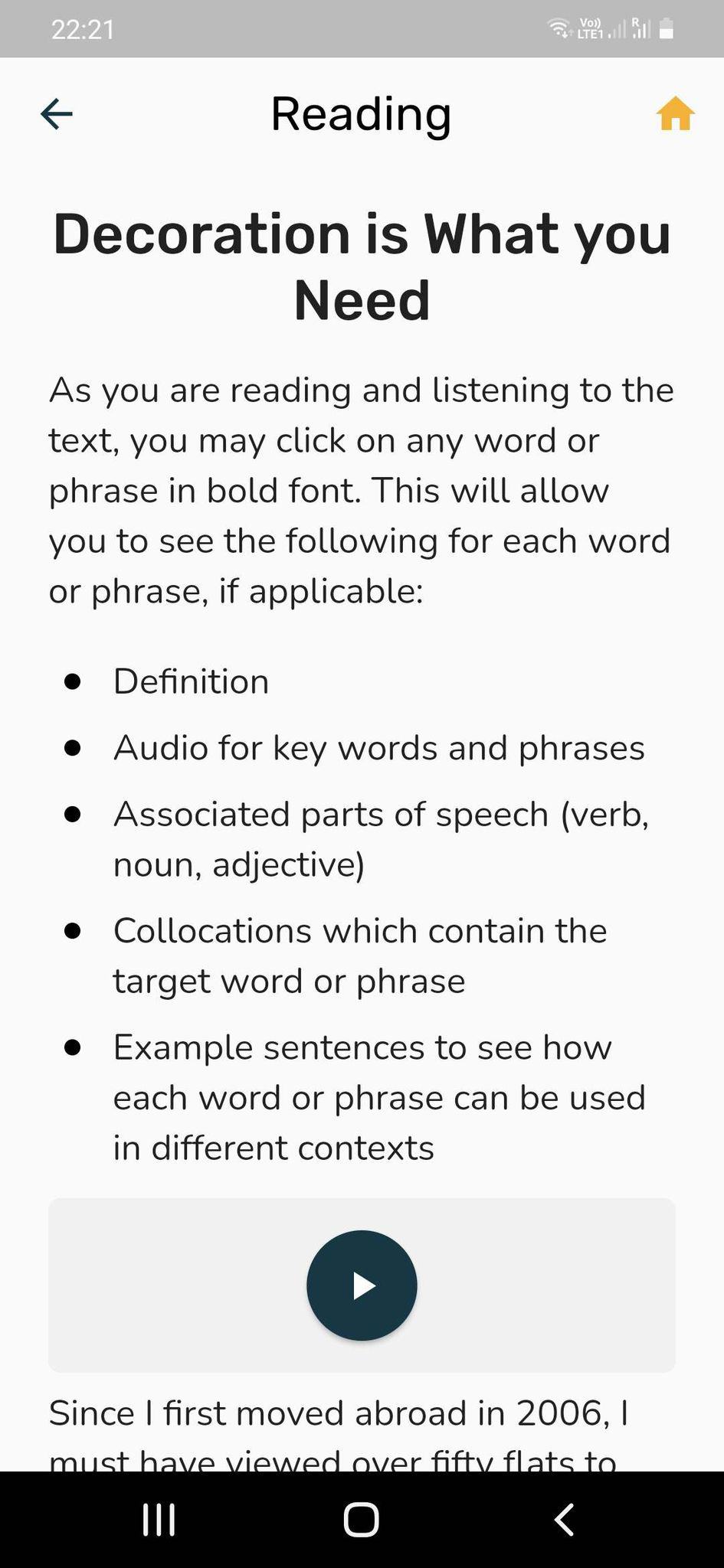
2. The chance to listen and read to a text at the same time:
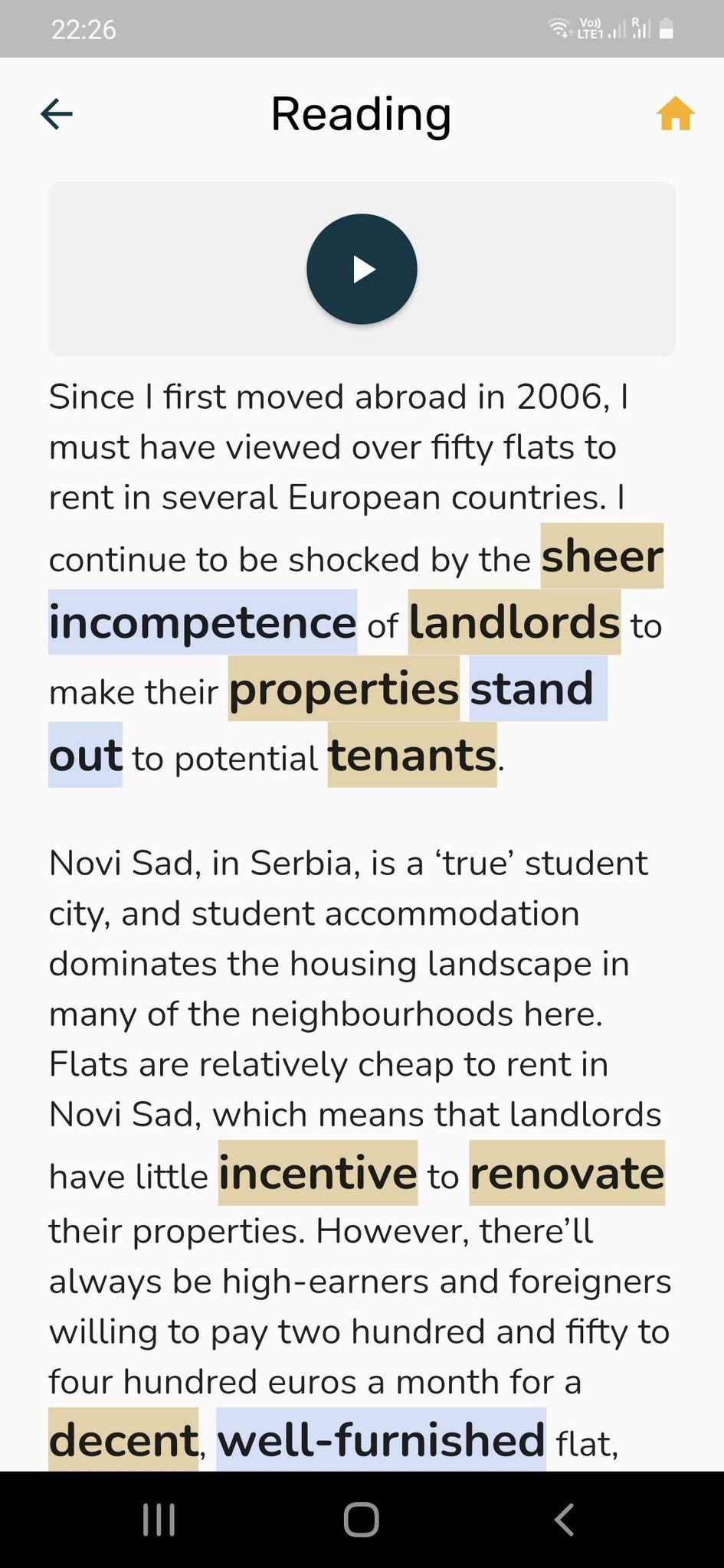
3. Typical information included on a bottom sheet when you click on a word or phrase. Here the target lexical item in question is the phrasal verb stand out:

4. Pay heed to the orange and white icon in the top right hand corner of each bottom sheet. Let me explain the idea behind Komified’s snazzy Vocab feature now.
KOMIFIED’S UNIQUE APPROACH TO LEARNING VOCABULARY AND COLLOCATIONS
So, I’ve clicked on the orange and white plus icon for the phrasal verb stand out.
Let's check out the following steps you’d need to take:
1. In the bottom navigation bar of the app, click on Vocab
2. In My Vocab, you can see a list of the words and phrases that I’ve clicked on in the bottom sheets. Definitions appear under the words and phrases as well:
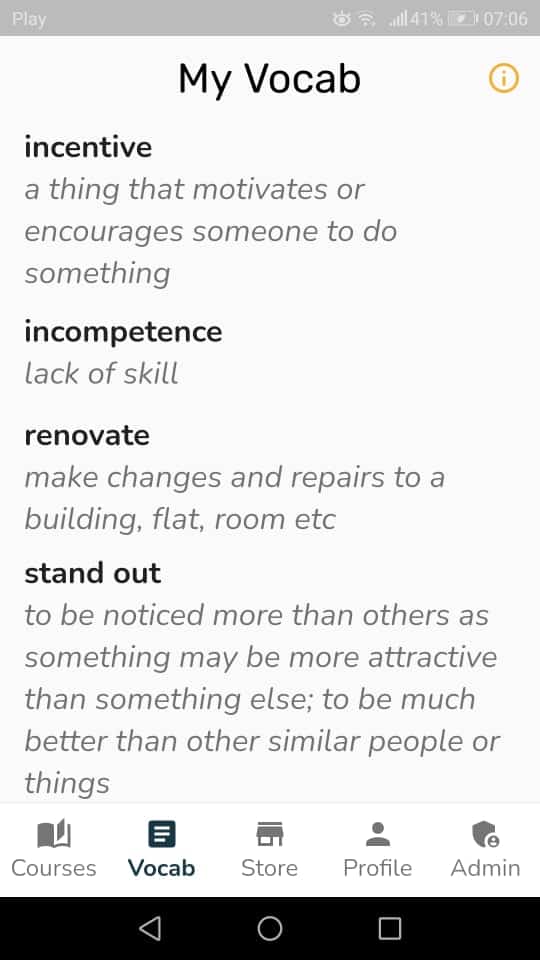
3. Click on stand out. This is what we have:
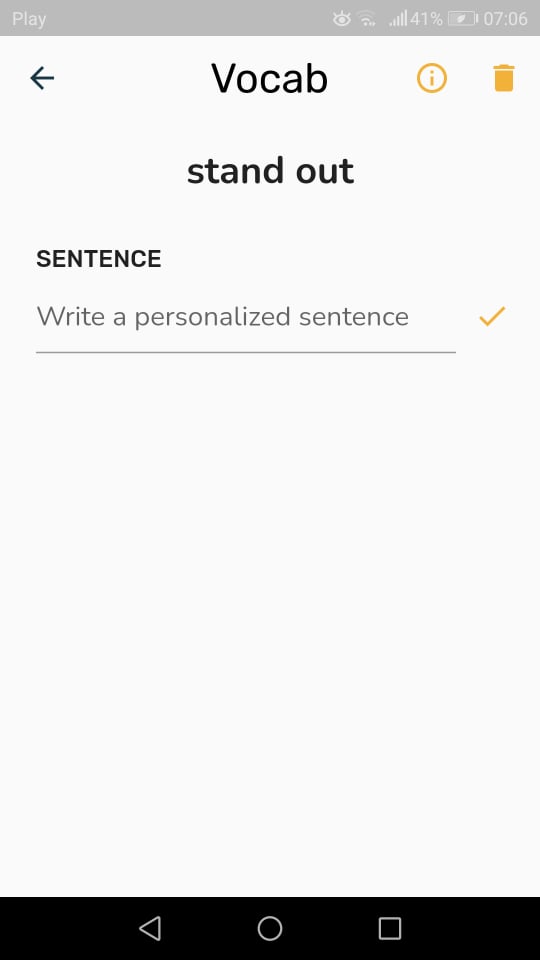
4. Each user has the chance to write a personalised sentence containing each target word or phrase. Ideally, this sentence should be true - about the user, someone they know or a life experience. I’ll go into why I passionately believe in the power of personalisation in the next section:
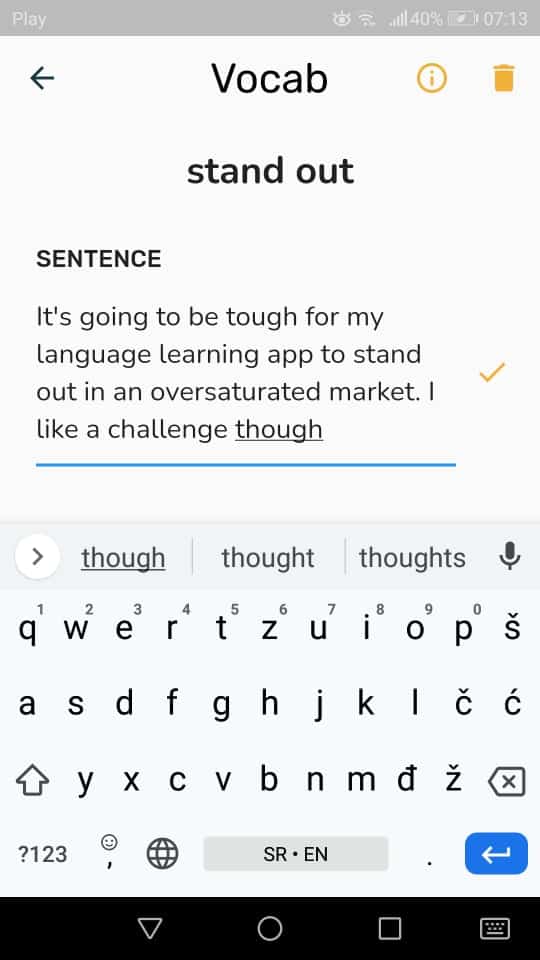
5. After writing a sentence, click on the orange tick
6. The sentence is now marked as ‘Waiting for correction’

7. I can see a list of users’ sentences in my admin panel which I can either confirm as correct, or make changes to so the sentences are correct:
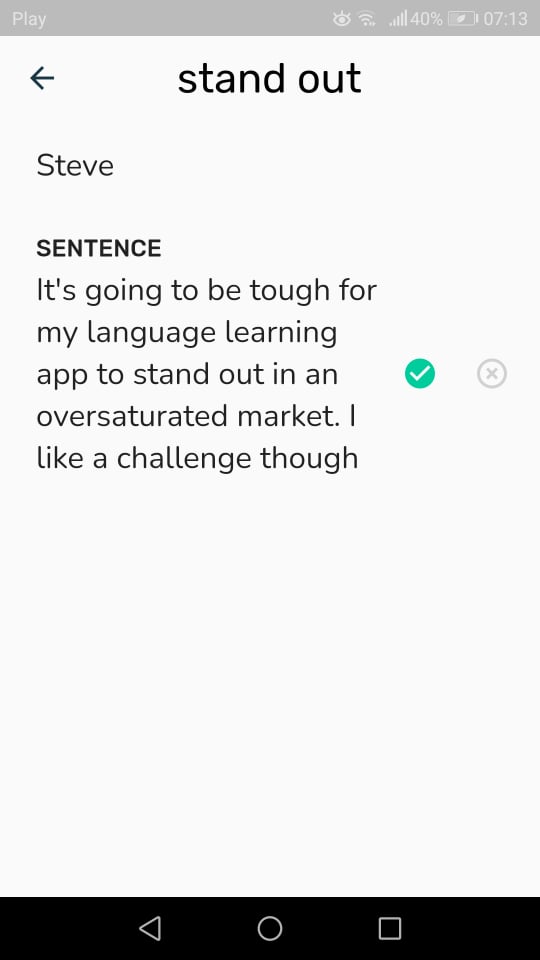
THE PERSONALISATION OF NEWLY LEARNED WORDS AND PHRASES
In order to make Komified a contender to be one of the best apps to learn English vocabulary, I knew that I had to exploit the power of personalisation.
When you create a personalised sentence which contains a newly learned word or phrase, I believe that with regular revision, these sentences will be 'swimming' in your brain and on the tip of your tongue in your future conversations.
So what is a personalised sentence?
A personalised sentence must be true. It must be about you, your life as it is, your life experiences or even someone you know. There must be a genuine context involved. Of course, the personalised sentence must contain a newly learned word or phrase.
The clever thing about creating all these personalised sentences is that you can pick up grammar through them as well.
Have a look at this sentence for the word renovate which appears in the text Decoration is what you need:

The use of the present perfect together with the word just is a common construction in English and one worth mastering.
In your future conversations, you’ll recall structures and use them correctly if you are mentally tuned into with your personalised sentences.
What do you think about when you speak English?
It’s no use having your mother tongue in your head. Translating from your mother tongue into English doesn’t work.
You need to be thinking about your personalised sentences. Whole sentences and constructions, such as the example of the present perfect above, need to be 'swimming' in your brain.
Overall, you should learn to SPEAK YOUR PERSONALISED SENTENCES. In such a way, you’ll find your fluency and a more advanced state of English.




